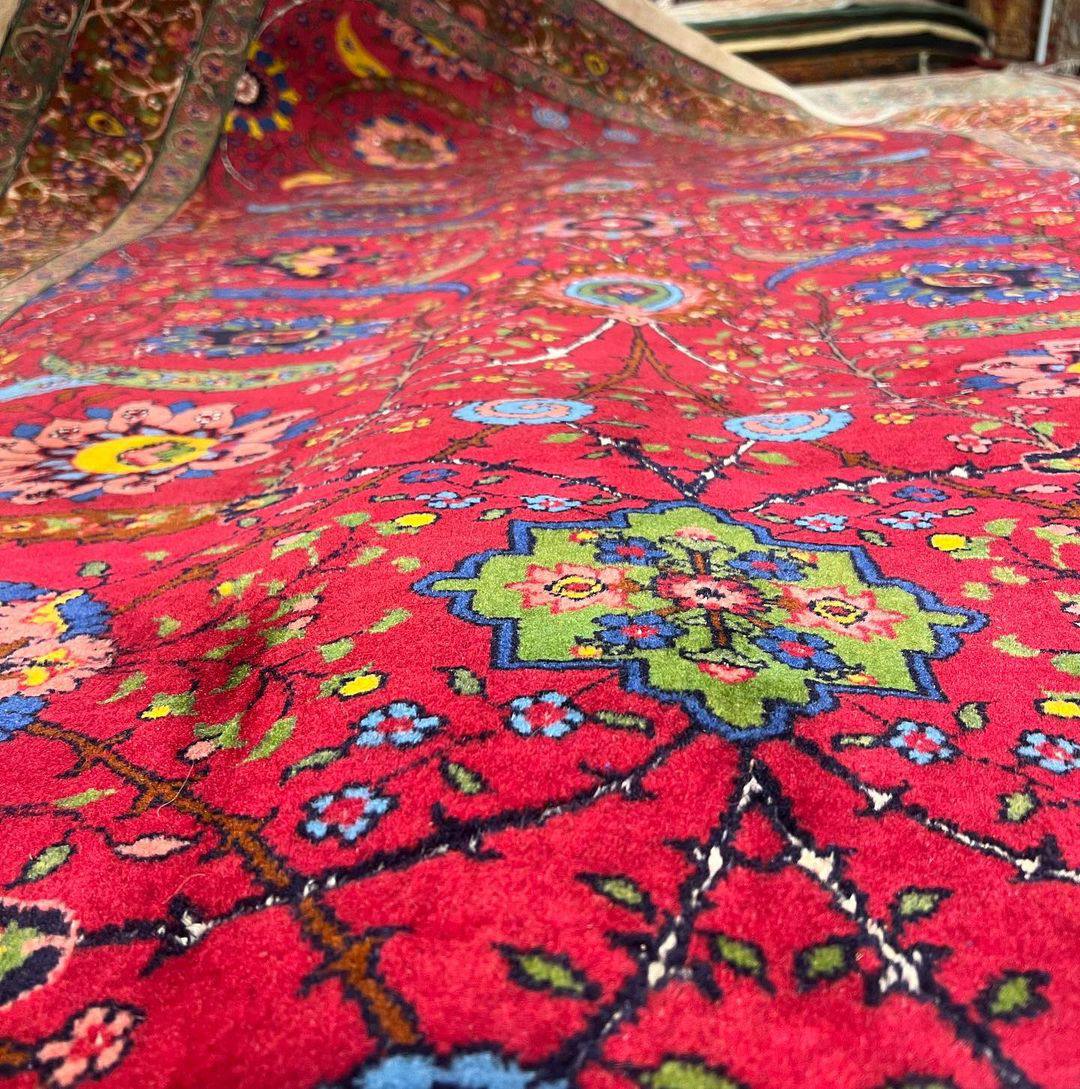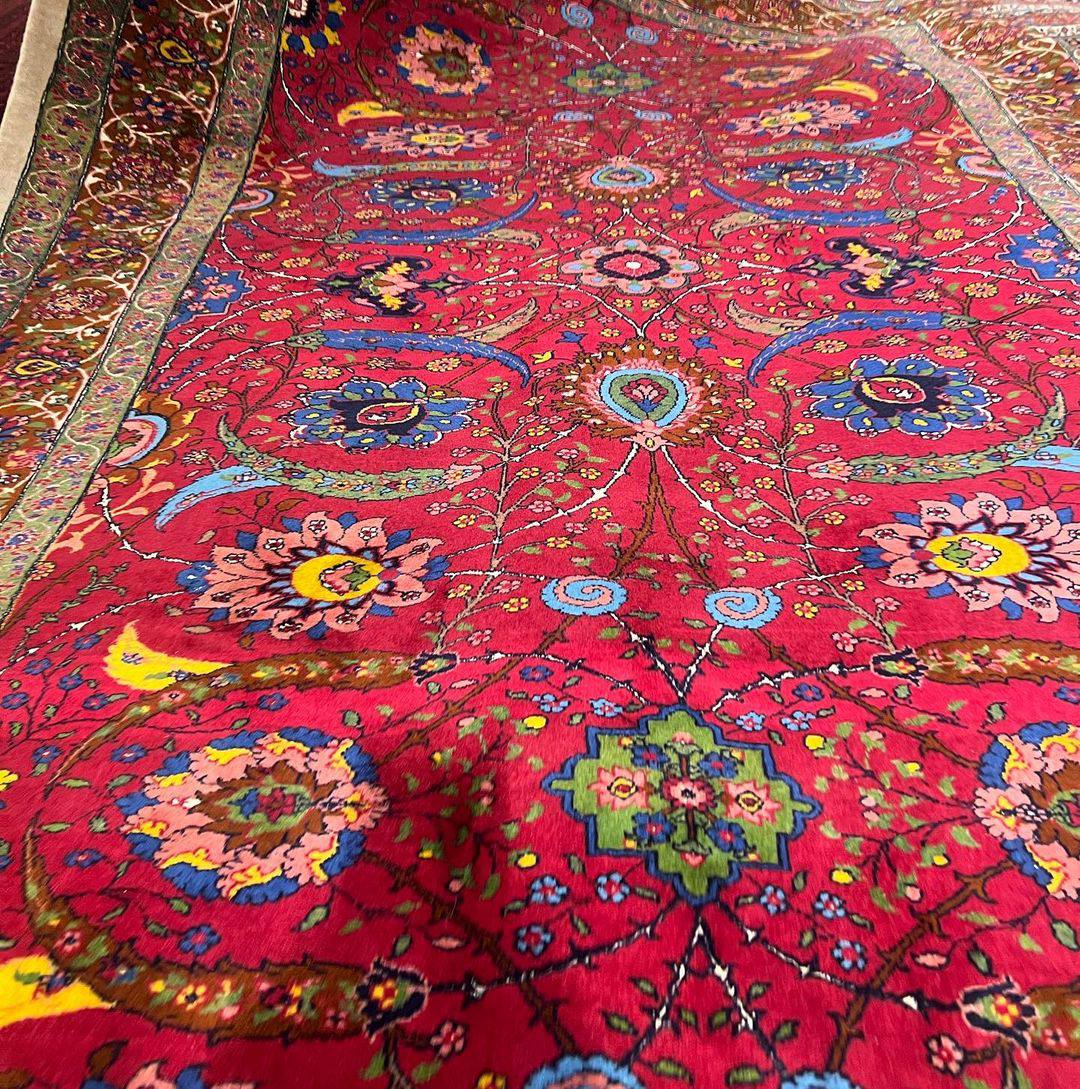Are Turkish rugs better than Persian?
Whether Turkish rugs are better than Persian rugs or vice versa depends on your personal preferences, needs, and specific criteria for evaluating rugs. Both Turkish and Persian rugs have their own unique qualities, styles, and characteristics, making them desirable choices for different individuals and settings. Here are some factors to consider when comparing Turkish and Persian rugs: How do I know if my Persian rug is expensive? Are Turkish rugs better than Persian persian carpet .
1. Design and Style:
- Persian Rugs: Persian rugs are known for their intricate and diverse designs, which often include floral motifs, geometric patterns, medallions, and borders. Persian silk rug may have a more traditional and classical aesthetic.
- Turkish Rugs: Turkish rugs, including those from regions like Anatolia, are known for their bold and tribal designs. They often feature geometric patterns, medallions, and vibrant colors, giving them a distinctive style.
2. Materials and Quality:
- Both Turkish and Persian rugs can be made from high-quality materials, including wool, silk, or a blend of both. The quality of the materials and craftsmanship can vary, and both regions have a long history of producing fine rugs. How do I know if my Persian rug is expensive? Are Turkish rugs better than Persian
3. Knotting Techniques:
- Persian and Turkish rugs traditionally use different knotting techniques. Persian rugs typically use the asymmetrical (Persian) knot, while Turkish rugs often use the symmetrical (Turkish) knot. The choice of knotting technique affects the texture and appearance of the rug. Carpet

4. Regional Variation:
- Both Turkey and Iran have multiple rug-producing regions, each with its own distinct style and traditions. Persian rugs, for example, come from regions like Tabriz, Isfahan, Kashan, Nain, Kerman, and Shiraz, each with its unique characteristics. Similarly, Turkish rugs come from various regions in Anatolia, each with its design and weaving traditions.
5. Size and Use:
- Consider the size and intended use of the rug. Turkish rugs, particularly smaller ones like Kilims, are often used as decorative wall hangings or prayer rugs. Persian rugs come in various sizes and can be used for both practical and decorative purposes. How do I know if my Persian rug is expensive? Are Turkish rugs better than Persian pictorial carpet
6. Budget and Availability:
- Availability and pricing can vary based on the specific rug, region, and market conditions. Both Turkish and Persian rugs can be found in various price ranges, from affordable to high-end collector\’s pieces.

7. Personal Preference:
- Ultimately, the choice between Turkish and Persian rugs comes down to personal preference. Some individuals prefer the bold and tribal aesthetics of Turkish rugs, while others gravitate toward the intricate designs and traditional elegance of Persian rugs.
8. Cultural and Historical Significance:
- Both Turkish and Persian rugs have deep cultural and historical significance in their respective regions. The choice may also reflect your appreciation for the cultural heritage associated with the rug. How do I know if my Persian rug is expensive? Are Turkish rugs better than Persian handmade carpet
In summary, there is no universally \”better\” choice between Turkish and Persian rugs; it depends on your style preferences, budget, and the specific requirements of your space. Both types of rugs have their own artistic merits and are celebrated for their craftsmanship and beauty. It\’s advisable to explore both options, consider your preferences, and choose a rug that resonates with you and complements your decor.
Click to buy a silk carpet combining machine and handwork machine rugs .
How do I know if my Persian rug is expensive?
Determining whether your Persian rug is expensive or valuable involves considering several factors, including its design, materials, craftsmanship, age, size, and market demand. Here are some indicators that can help you assess the potential value of your Persian rug: How do I know if my Persian rug is expensive? Are Turkish rugs better than Persian Handicrafts

- Design Complexity: Intricate and complex designs with fine details, such as floral motifs, medallions, and intricate borders, often indicate higher value. Pictorial or historical motifs can also contribute to a rug\’s value.
- Materials: High-quality materials, such as fine wool, silk, or a blend of both, can increase the value of a rug. Silk rugs are generally more expensive due to their luxurious texture and sheen.
- Knot Density: A higher knot density, measured in knots per square inch (KPSI), usually suggests finer craftsmanship and a more valuable rug. Higher KPSI rugs often have more intricate designs.
- Age: Antique Persian rugs, especially those in good condition, are typically more valuable. The age of the rug can add historical significance and collectible value.
- Size: Larger rugs, such as room-sized carpets, are generally more valuable due to the amount of materials and labor required to create them. However, exceptionally large rugs can be rarer and, therefore, more expensive.
- Provenance: Rugs with a documented and prestigious provenance, such as those owned by famous individuals or displayed in renowned exhibitions, can be more valuable due to their historical significance.
- Market Demand: Current market conditions and trends can affect the perceived value of a Persian rug. Rugs that align with popular design trends may be in higher demand and, therefore, more valuable.
- Condition: The overall condition of the rug, including its pile, fringe, and any repairs or restorations, can impact its value. Well-preserved, clean, and undamaged rugs are generally more valuable.
- Documentation: If you have documentation, certificates of authenticity, or information about the rug\’s provenance, these documents can help establish its authenticity and value. How do I know if my Persian rug is expensive? Are Turkish rugs better than Persian Saffron
- Appraisal: Consult with a professional rug appraiser or expert to obtain a professional assessment of your rug’s value. Appraisers can provide an accurate valuation based on their expertise and market knowledge.
- Expert Opinion: Seek opinions from multiple experts or reputable rug dealers to get a range of perspectives on the rug’s value. Different experts may provide varying assessments.

It’s important to note that the value of a Persian rug can fluctuate over time due to market conditions and changing trends. Additionally, the emotional or sentimental value of the rug to you may not always align with its monetary value. If you are interested in selling or insuring your rug, obtaining a professional appraisal is recommended to determine its current market value accurately.
